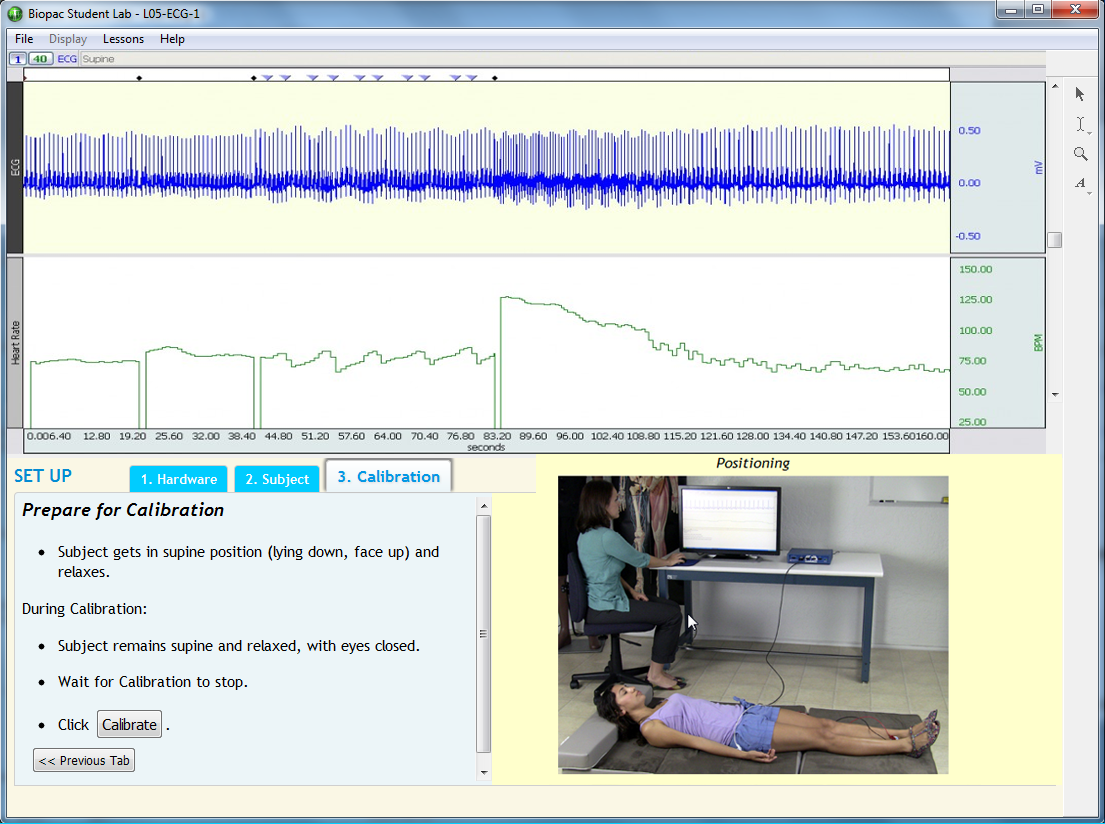L05 Electrocardiography I

This BSL lesson provides an introduction to the electrocardiograph and the recording of the heart’s electrical signal. The lesson familiarizes the students with a Lead II ECG recording and with the components of the ECG complex. They will learn to correlate the electrical events of the ECG (P, Q, R, S & T components) with the mechanical events of the cardiac cycle. Students will perform a number of tasks designed to promote changes in the ECG complex, and then perform a detailed analysis of their ECG recording.
Experimental Objectives
- To become familiar with the electrocardiograph as a primary tool for evaluating electrical events within the heart.
- To correlate electrical events as displayed on the ECG with the mechanical events that occur during the cardiac cycle.
- To observe rate and rhythm changes in the ECG associated with body position and breathing.
Tasks Performed by the Student
BSL Lessons are designed to allow at least four students to record and save data in a normal lab period (60-90 minutes). Typically, labs work most efficiently with three or more students working together at each BSL station.
- Record Lead II ECG.
- Event mark each new activity.
- Lie down and relax.
- Take 5 deep breaths.
- Perform a physical exercise to increase the heart rate.
- Relax while heart rate returns to normal.
Videos
BSL 4 L05 ECG I - Electrocardiography
BSL 4 L05 ECG I – Seated Recording
Biopac Student Lab Student Download
Lesson Hardware
This lesson requires a Biopac Student Lab (BSL) System and the following hardware. If your BSL System does not include all hardware items, expand your system by selecting required items below. For more details, review the Lesson: L# BSL Lessons - see the Lab Manual or launch BSL; A# and H# BSL PRO Lessons, click the PDF link above to review full setup, recording, and analysis procedures.
| Item | Name | Cart |
|---|---|---|
| SS2LB | Lead set, shielded, BSL | Add to Cart |
| GEL1 | Electrode gel 50 g | Add to Cart |
| EL503 | Disp. Gen-purp electrode 100/pk | Add to Cart |
| ELPAD | Abrasive Pads 10/pk | Add to Cart |
WHAT'S NEW
With the anticipation of the 2024 Olympics, there has been lots of recent research on athletic...
Stay Connected